In one of my recent Five Friday Faves emails, I mentioned how much I’m loving and looking forward to the new release of my favorite planner. The response I got was kind of surprising. (And by the way, if you’re not getting those weekly emails, you can sign up here.) I got so many requests to tell more about my devotion for this little planner. I haven’t written about it before because I just didn’t think you’d be interested.
hobonichi for teachers
Because here’s the thing. This little (beloved) planner of mine is something of an acquired taste. And to be honest, there are things about it that make the Hobonichi less-than-perfect for teachers.
But the paper. Oh the paper. And the lovely understated lines and colors. And the fact that you get a page for every day of the year in a thin little book. (Did I mention the paper?) Well, let me give you a little picture of how I use this planner and what I like so much about it.
My Planner Evolution
A few years ago I wrote a post about how I used the Plum Paper Planner and then before that a different post about using a bullet journal to meet all my teacher planning needs.
And I really did like those systems. To this day, those posts are some of my most popular ones. It seems that there are a lot of teachers who love to plan. As much as I loved those systems, you know that if I’ve switched to something else, it’s got to be good.
These days the Hobonichi is my main squeeze. Here’s why.
Tomoe River Paper — the holy grail for the paper aficionado.
Tomoe River Paper is this incredibly strong but delicately thin paper manufactured in Japan. Only a few stationery companies use it in their products, and Hobonichi is the most popular.
What’s so special about this paper? Let me sing its praises.
- The paper is remarkably thin. It’s Bible-in-the-hotel-drawer thin. This means that you can have a book with a TON of pages, that is still thin and lightweight. My Hobonichi planner has a page for every day, in addition to weekly, monthly and yearly spreads (and even a few pages in the back for notes).
- Tomoe River Paper (or TRP, as it is known to its fans) is crazy strong for how thin it is. I’ve NEVER torn a page.
- This paper is also SO smooth! My pen just glides across those pages so easily, which is why fountain pen users really love this paper. It’s truly a pleasure to write on. Of course, the downside is that this means it has a long dry time. You can’t just write with your fountain pen and slap the book shut without having ink on the other side.
- It doesn’t bleed or feather at all. Even though the paper is SO thin — the ink doesn’t come through onto the other side (bleeding). And your written words stay intact without spreading all over the page (feathering). Now, you can see the writing on the backside (this is what we call ghosting) but that’s different than bleeding. And I’ve actually come to like the look of ghosting. It makes me feel like I’ve got a well-used planner and a productive life.
But the paper is just one thing I love about Hobonichi.
The Different Hobonichis
Hobonichi makes several different planners in three different sizes that fit a variety of needs. Which is the best Hobonichi for teachers? Let’s see.
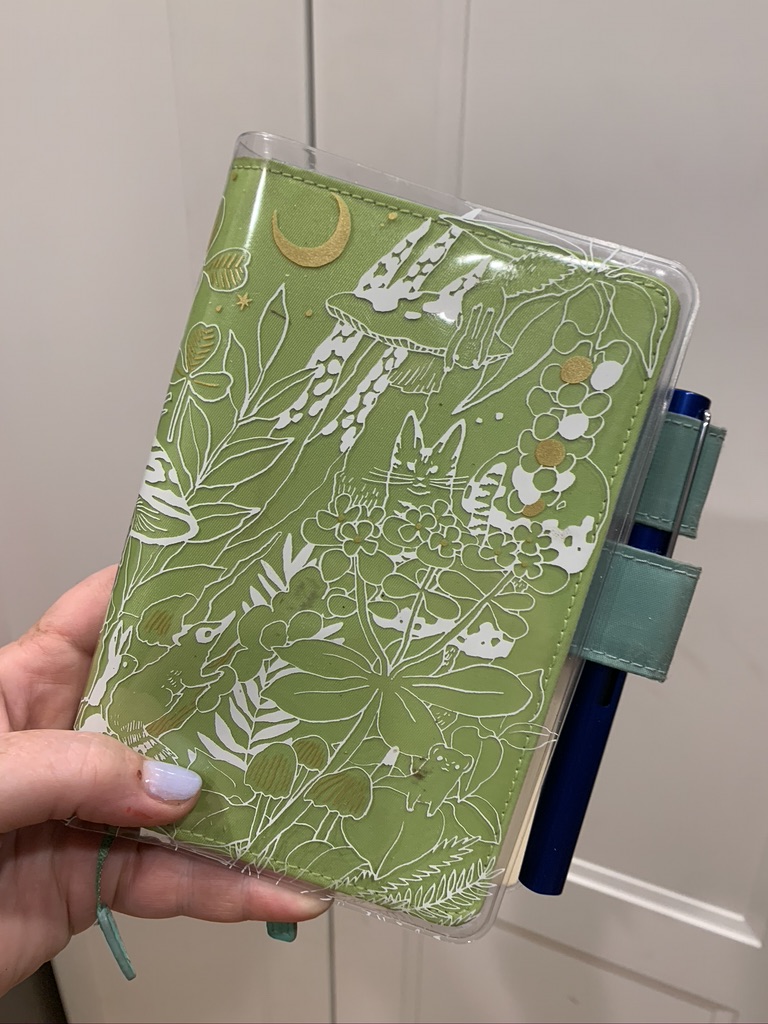
The A6
This little planner was the first that Hobonichi made and these days there are a few different options.
- The Original. This book has yearly, monthly and daily spreads and is almost entirely in Japanese. I get one of these every year and use it for journaling, memory keeping and keeping score in family card games.
- The Original Avec. This is very similar to The Original but the year is divided into two different books.
- The Planner This is very similar to The Original, with a few differences. It has a black, textured cover, is almost entirely in English and has a more subdued color palette. You can get this book with either a Monday or Sunday start on the monthly spread. Last year I used this instead of The Original.
- The Day-Free This book was new last year. It has yearly and monthly spreads, but blank pages instead of dailies.
Here are some shots of my wee little a6 planner. It’s my personal planner — the planner of my heart and soul.
The A5
The A5 is called the Cousin and it comes with just a couple of options.
- Cousin This is the basic book. It’s got the entire year in one book with yearly, monthly, weekly and daily spreads (along with some extras.) It also comes in an April start (which corresponds to the Japanese academic calendar.)
- Cousin Avec. This is just like the Cousin, but the book is spread into two books — January-June and July-December. This is the one I get for my teacher planner.
- Day Free. Just like the Cousin, but blank pages instead of dailies.
Here’s a shot of my set of a5 Cousin Avec books (ignore the fact that they’re from two different years.)
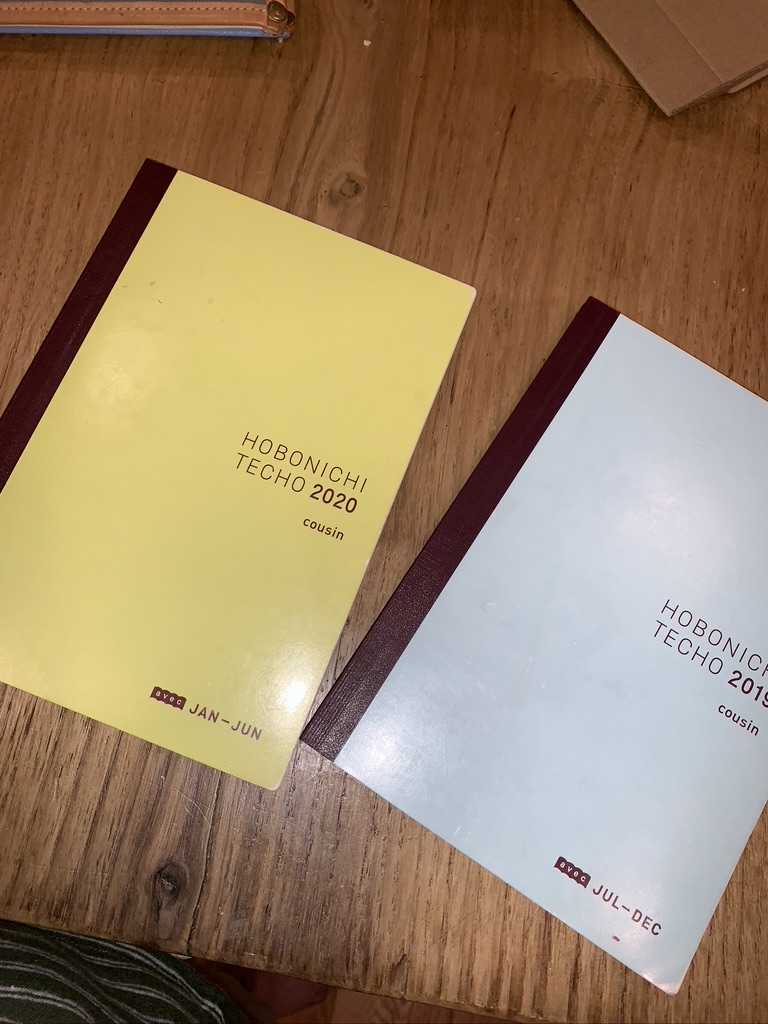
The Weeks
The Weeks is the narrow and thin wallet-sized planner. It comes in two styles — the regular Weeks and the Weeks Mega, which is twice as thick because it has a bunch of blank paper at the back.
I bought one this year, thinking it would be good to have something to carry around with me, but I quit using it months ago.
How I Use My Hobonichi Cousin Avec
Okay, so right off the bat I will say that I would MUCH rather have my entire year in one book. This is my BIGGEST compromise when it comes to using the Hobonichi. Hobonichi started splitting the year for people who were filling their journals with artwork and decorations that made the book super-thick by the end of the year. I don’t use it that way, so that’s not my issue. But I don’t want to have a book that has half of third grade and half of fourth grade.
But, Hobonichi does not make a planner that works with the US academic year. The closest they get is the April start, for the Japanese calendar, but those daily pages end on March 31. That just won’t work for me.
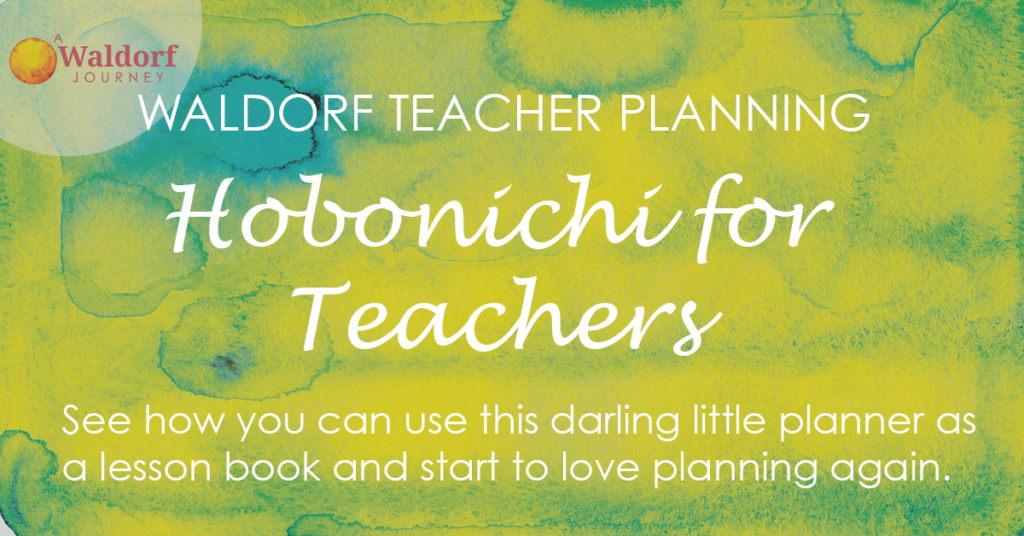
So, my workaround is to get the Cousin. Because the split is July 1, it means that this year 3rd grade went into the January-June 2020 book, and 4th grade will go into the July-December 2020 book. It works out. The books for the next calendar year are released in September, so this means that right now as I’m planning 4th grade, I don’t have the book for the second half of the year yet.
It’s terribly inconvenient. But I make it work. I’ll get the 2021 books sometime around the middle of September.
Here are some photos of my third grade Hobonichi so you can see how I use it.
Yearly Spread
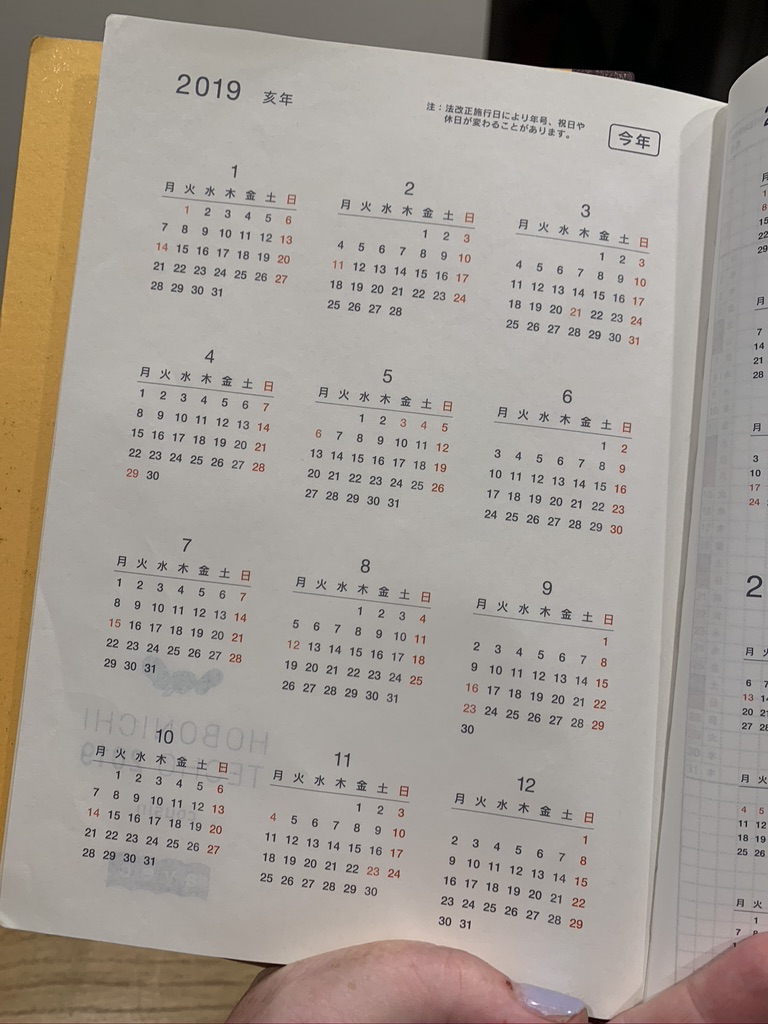
I usually use a highlighter to map out my block schedule on this yearly page. I guess I never got around to it this year. (I also make a digital document with my block rotation.)
Another Yearly Spread
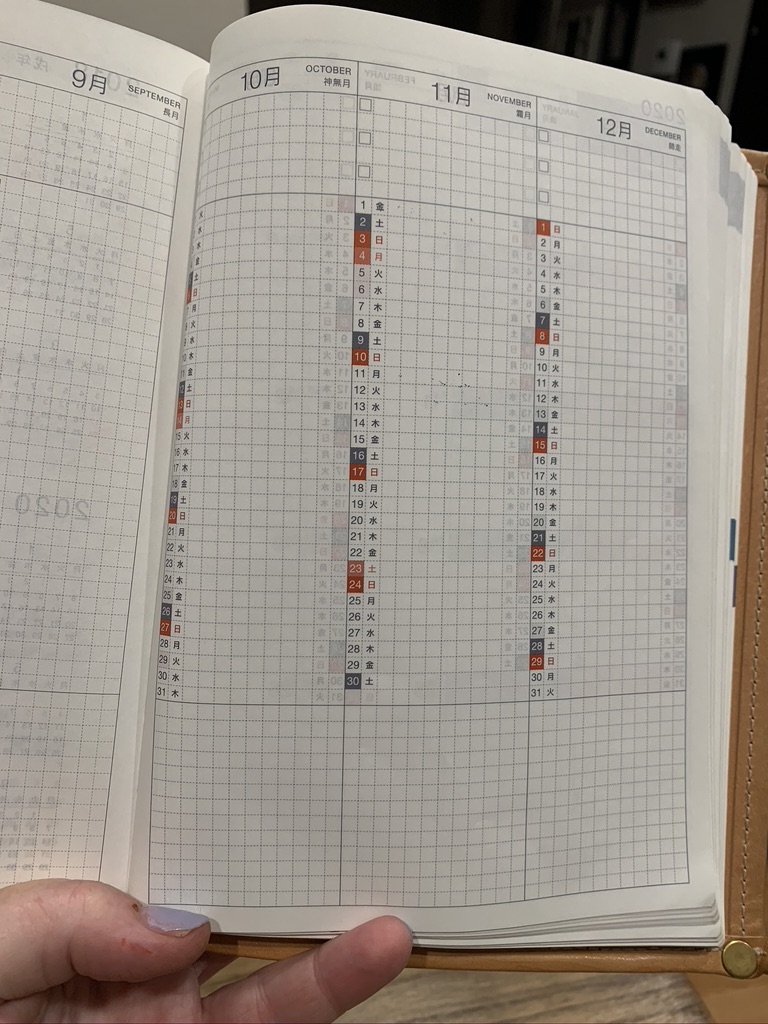
This is another yearly layout. I have sometimes used this like an index. If I took notes on a daily page that I want to find later, I’ll the topic on that date here. But, again, you can see that I don’t use it that much.
The Monthly Spread
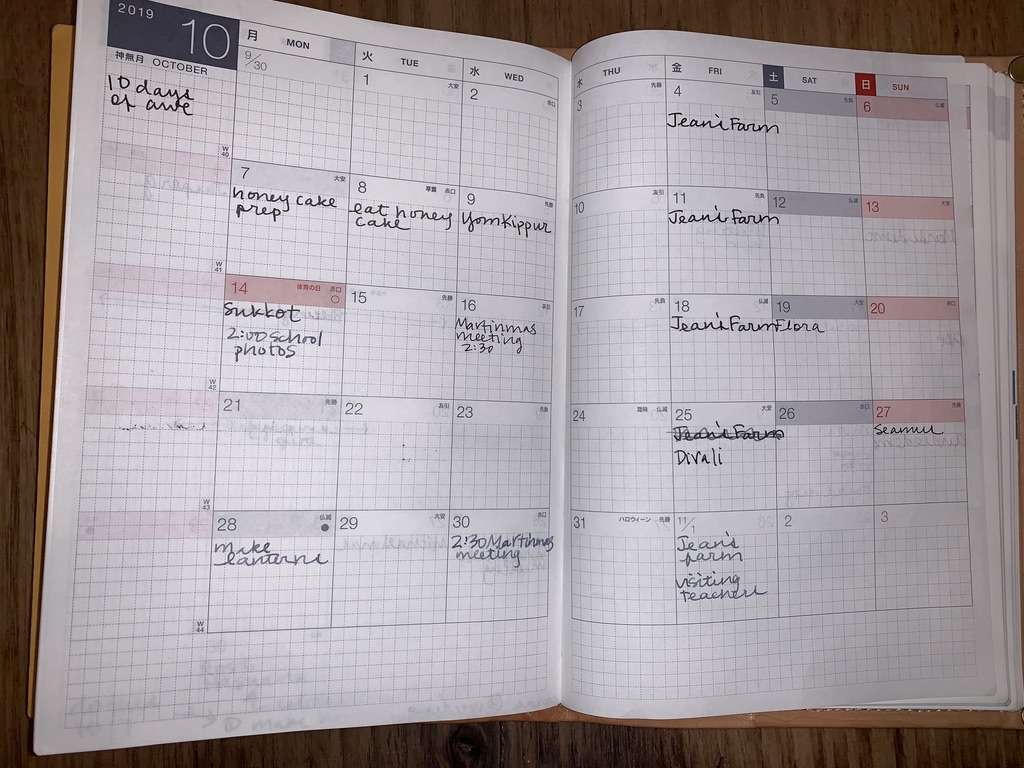
I use this quite a bit. I usually have a sticky note flag or bookmark on the current monthly page and it’s probably the easiest place to flip open to and write something down quickly.
The Weekly Spread
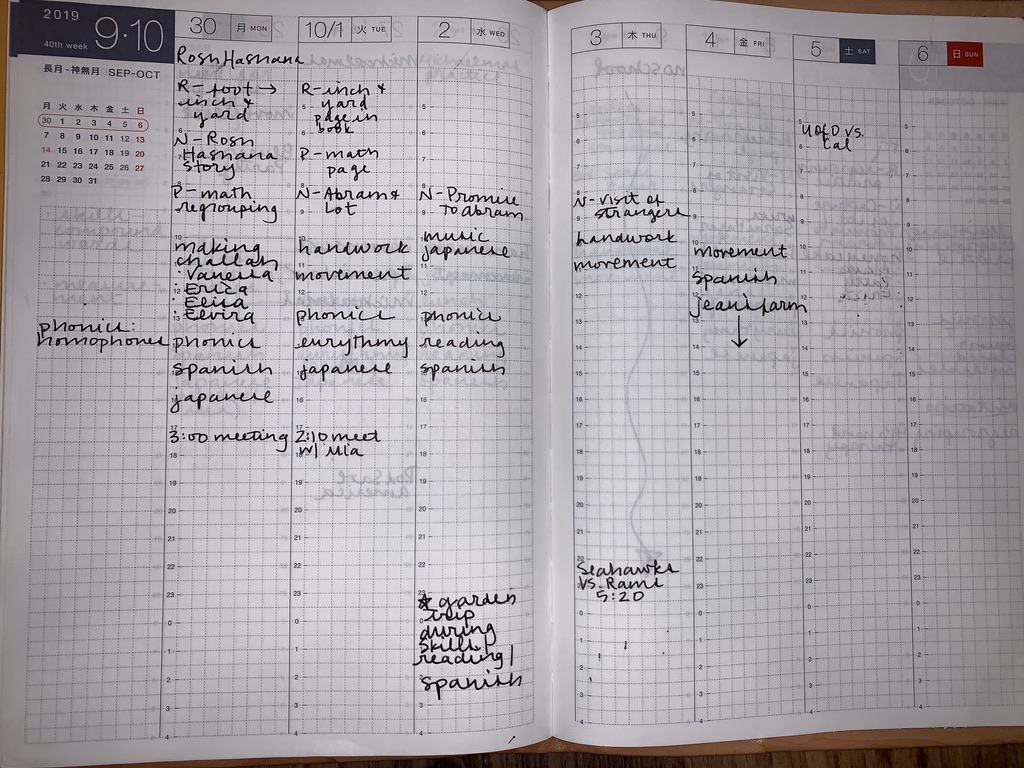
In this book, all of the monthly spreads are together, followed by all of the weekly spreads. Again, I usually have some sort of marker so I can find the current week easily. But this page gets the most action on Sundays when I map out the week ahead. I generally ignore the time stamps so I can fit in my full schedule.
I usually write a few words about main lesson content — noting the review, new content and bookwork — along with the rest of the class schedule and any current themes. (Oh, and don’t forget the football games.)
The Daily Spread
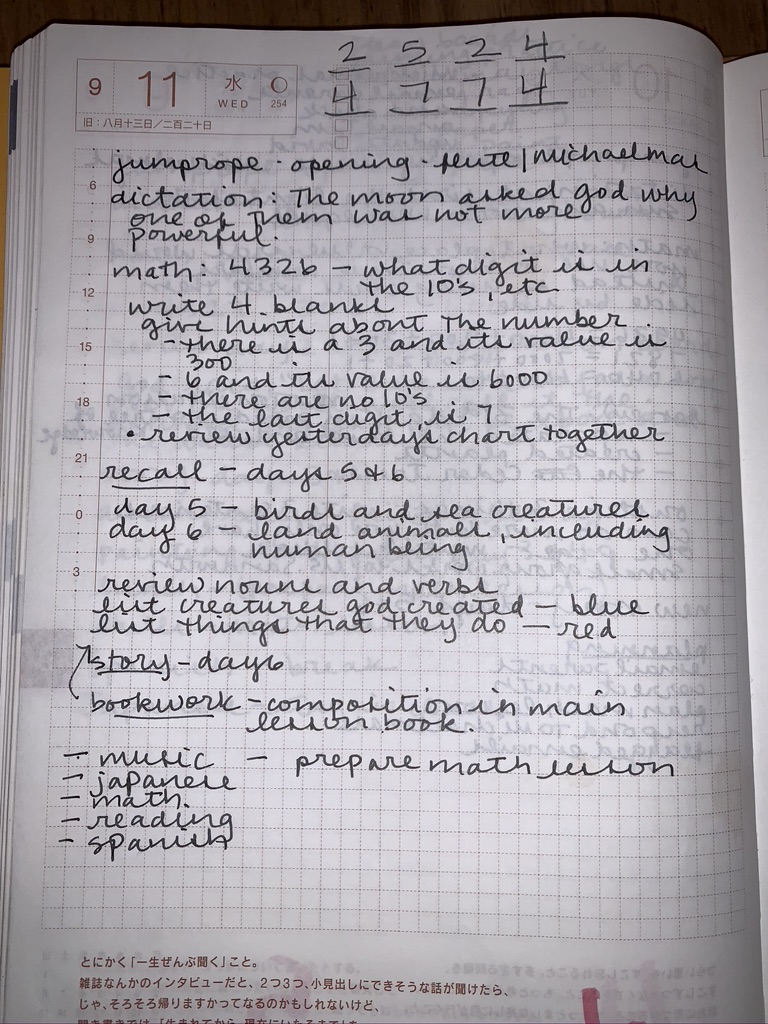
This is where the magic happens. I write out my main lesson, mostly with bullet points. I’ll often include more notes about the review portion of the lesson, but I usually just write the title of the story I’m telling. Though there is a lot of room on the page, there is not enough room for me to write out my notes for storytelling.
So, I have another book that I use sort of like a bullet journal where I write out notes for the stories, or anything else that won’t fit in my planner.
For this, I use the Hobonichi Notebook.
I have a little canvas cover that holds the current planner and notebook and that’s what I carry to and from school every day (well, back when we were going to school every day.)
I used that notebook all through third grade — writing all kinds of notes and random thoughts, in addition to my daily story — and I still didn’t use every page. I had decided to use up some of the other notebooks I have this year and not purchase another notebook, but now that I take another look at it, I’m not so sure!
What I Don’t Love About the Hobonichi
Now, I’ll preface this section by saying how much I LOVE my Hobonichi. The planning experience is SO pleasant that it makes me want to pull out my planner all the time. It’s made Sunday morning planning one of my favorite times of the week.
But, life is full of compromise, and here’s what I’m sacrificing by staying so devoted to my Hobonichi.
No roster pages. Most teacher planners have a bunch of lined pages at the back where you can write all your students’ names along the side and track grades, attendance, skills, etc. along the grid. I’ve switched to a digital solution for this stuff.
No academic calendar. As described above, they don’t make a planner with dates that perfectly match what I need. My makeshift solution works, but it means that I don’t have the planner for the second half of the year during my summer planning. It also means that I’m only carrying around half of the year with me. The upside is that it means less to carry. The downside is that if it’s October I need to write down something that’s going to happen in March, I won’t have that book with me. (But this almost never happens, so it works out.)
No fancy teacher-specific pages. That Plum Paper Planner I used to use had all kinds of fun teacher pages — sub plans, school contacts, parent communication logs, seating charts — useful stuff. But, you know, even though it was fun to fill those out at the beginning of the year, I hardly ever used them.
In the end, the pleasant writing experience of the Hobonichi has made me a convert. If you’re a paper and pen nerd like me, you might want to give it a try.
But don’t blame me if you find yourself coming up with a purpose for three planners every year. (And don’t join the Facebook group if you don’t want to be tempted.)
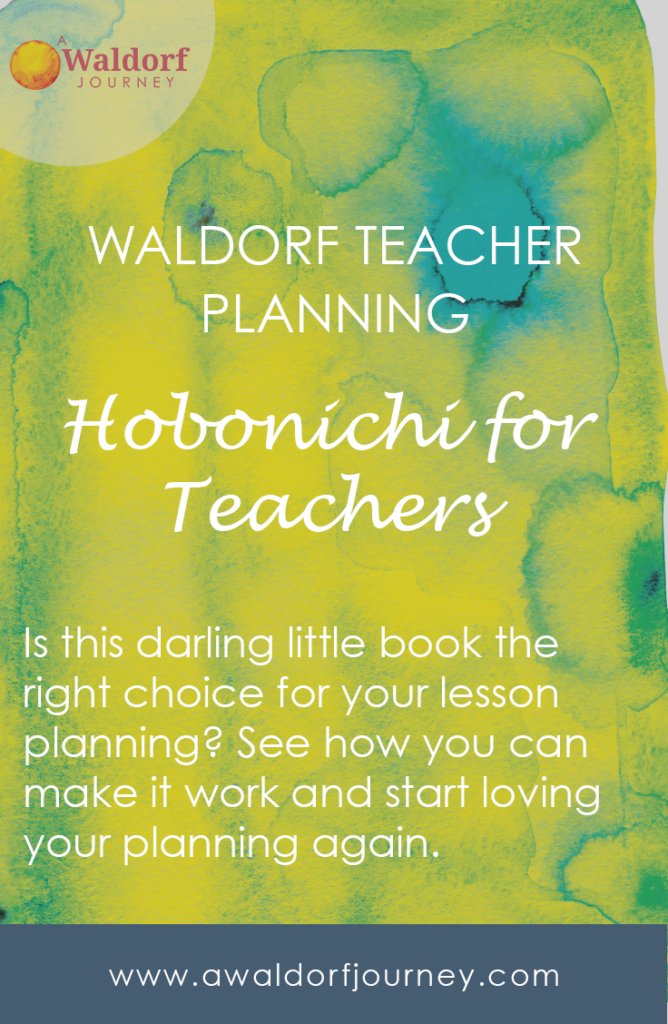

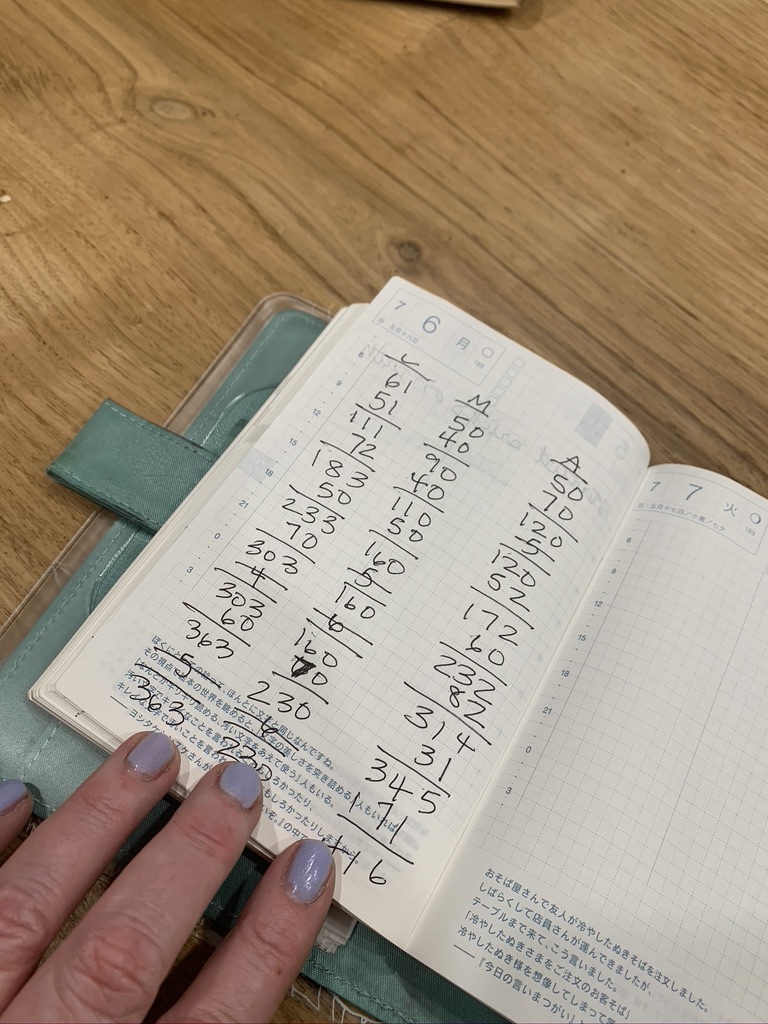
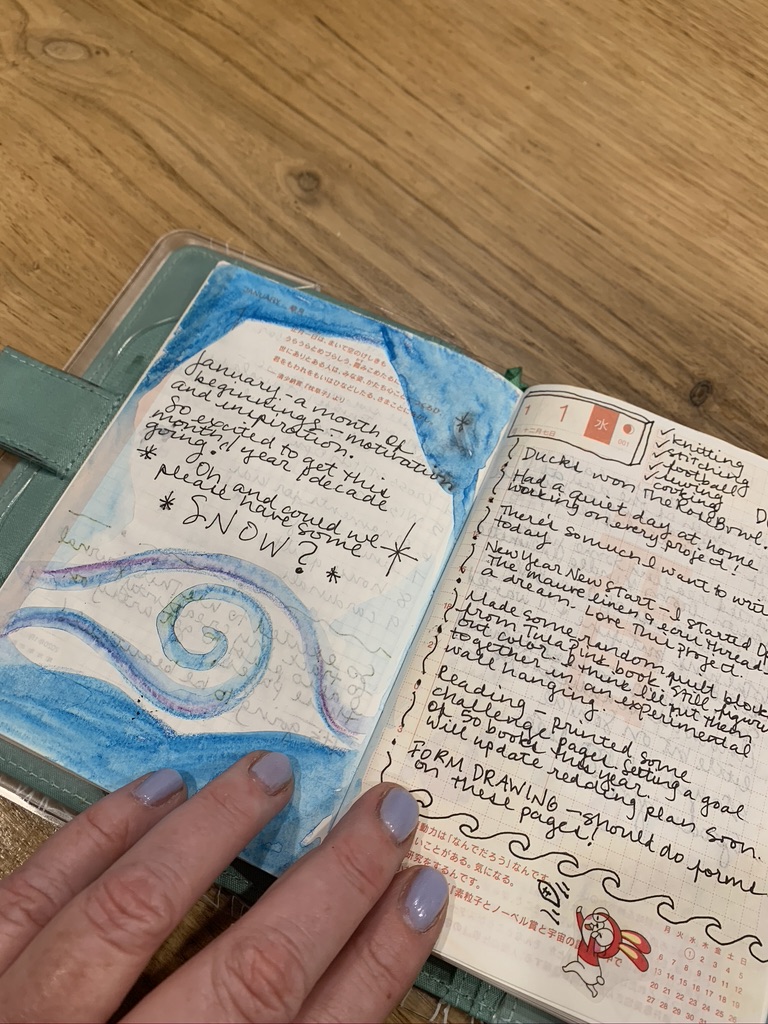
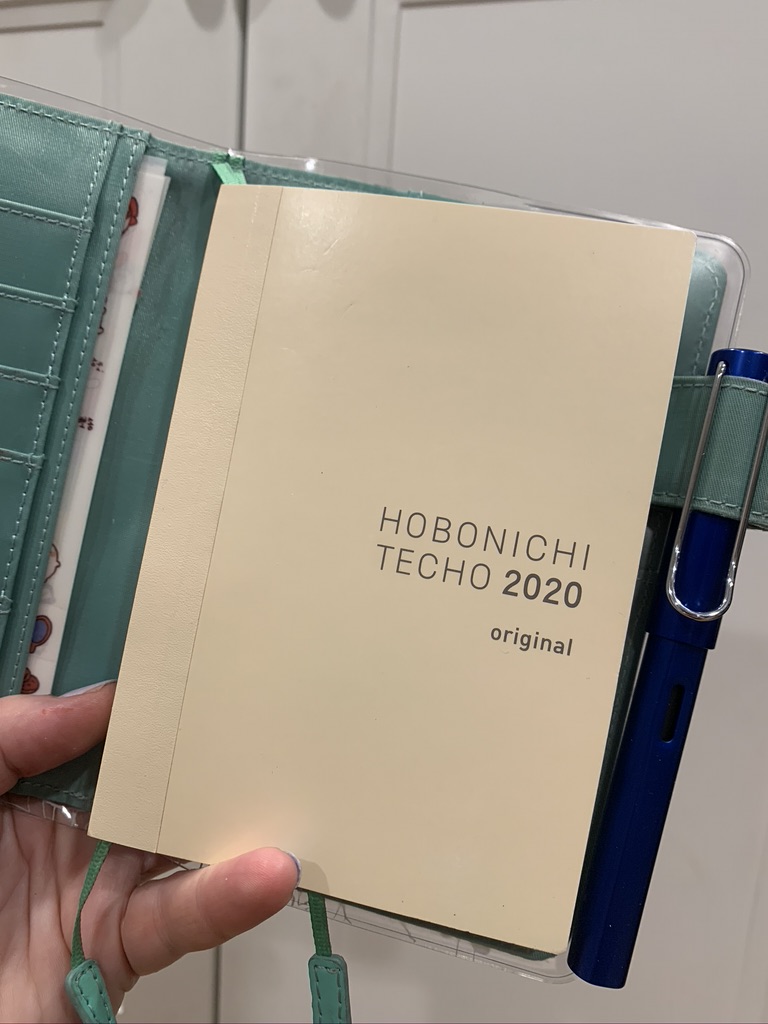
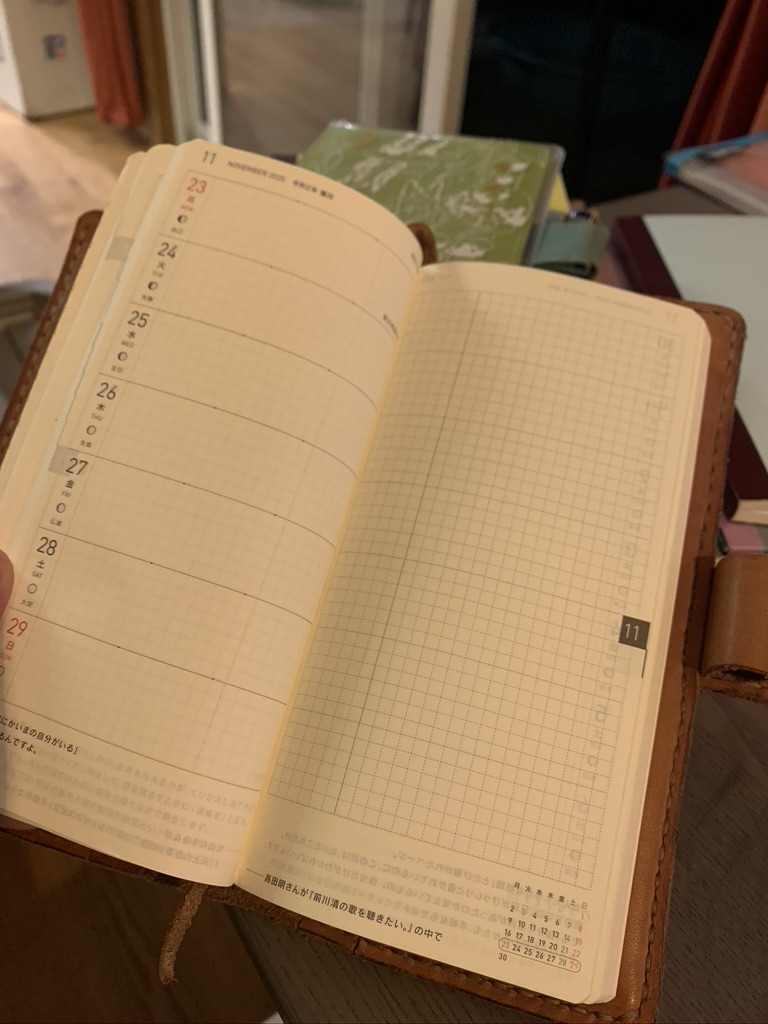
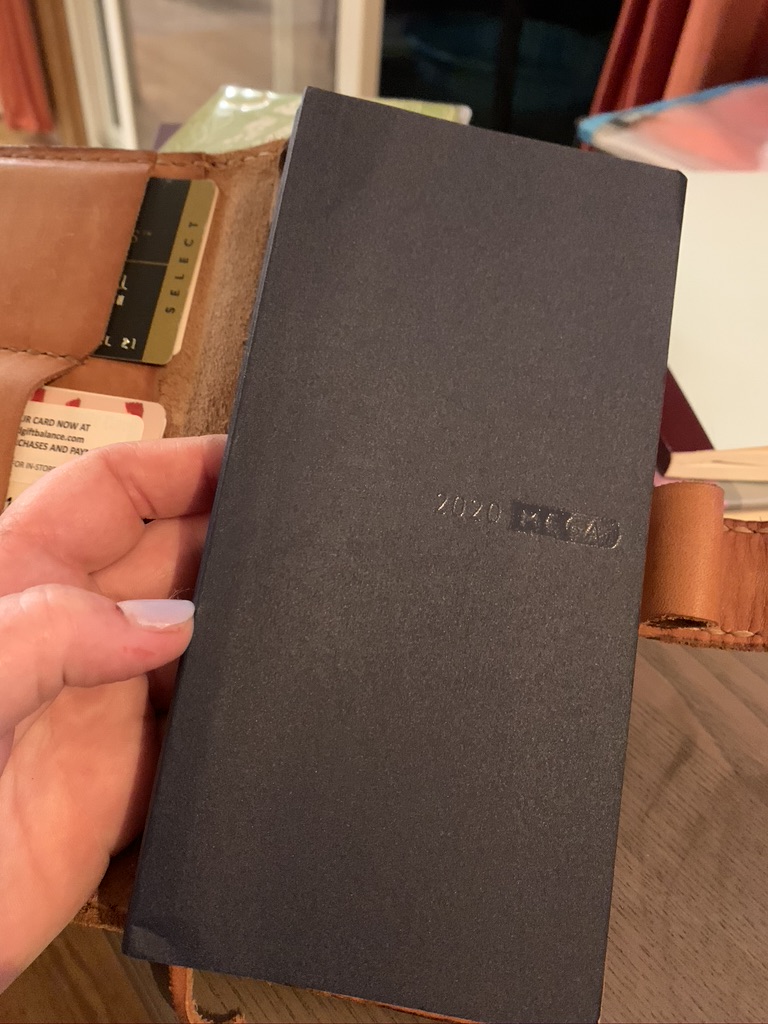
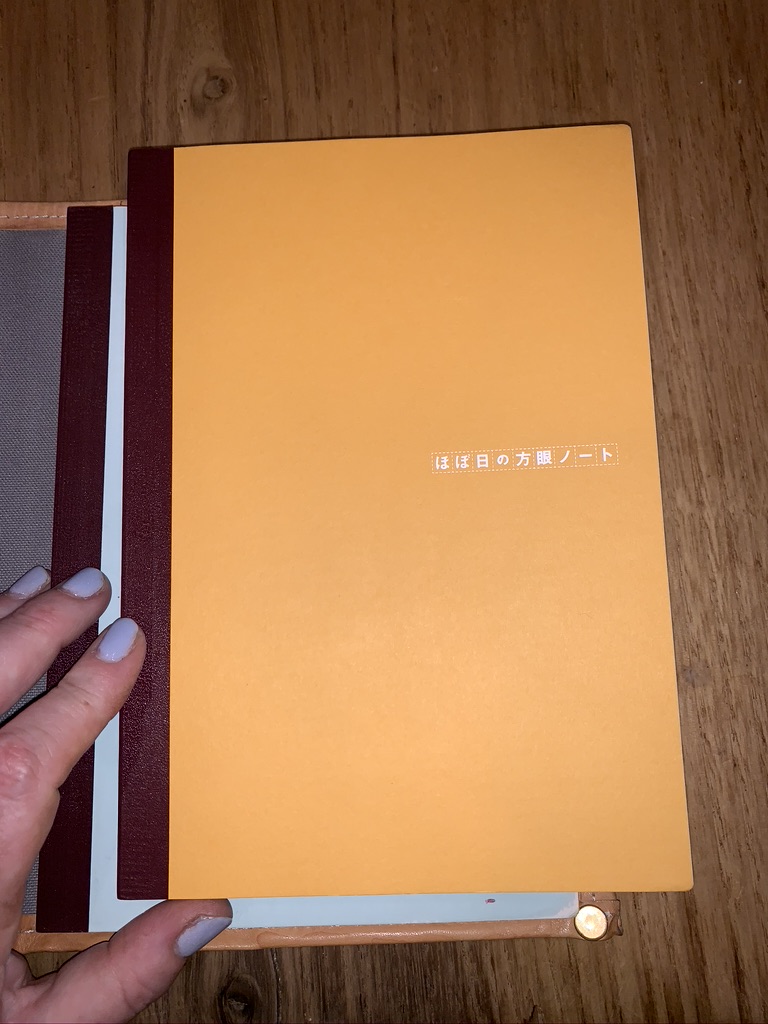
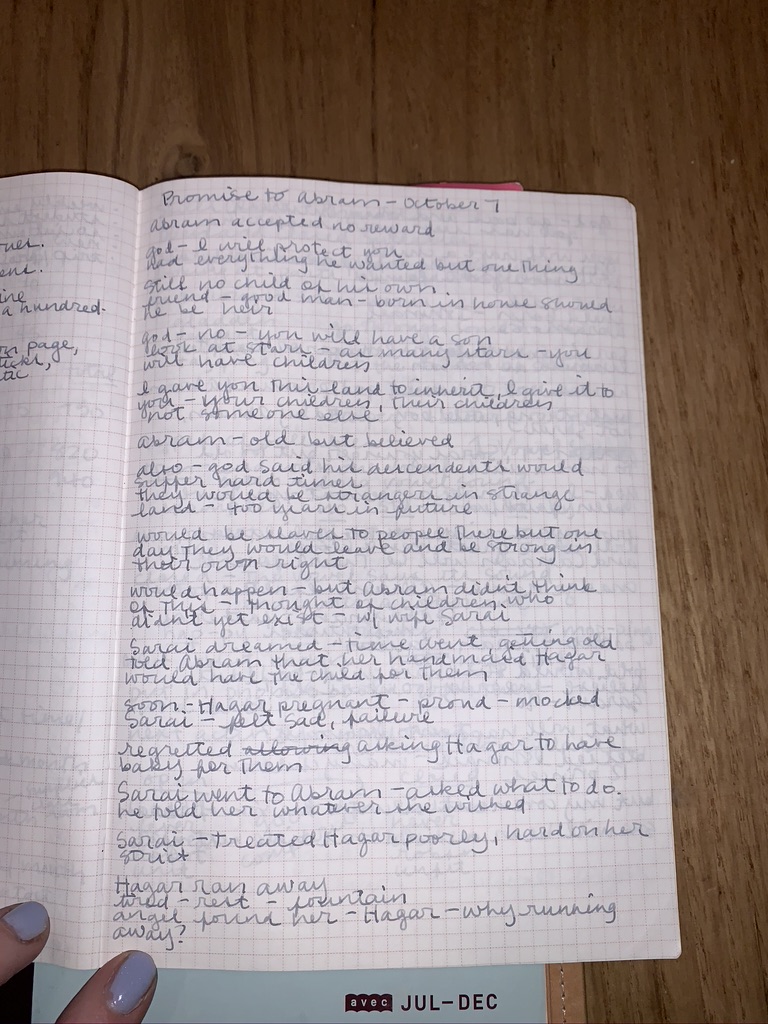
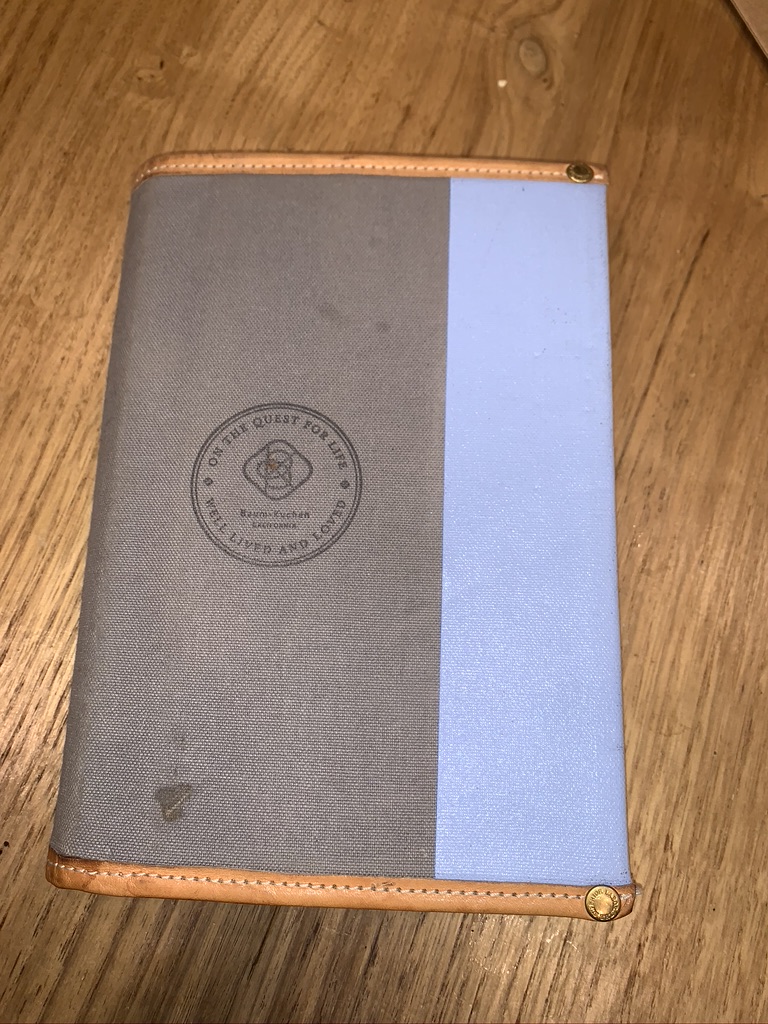
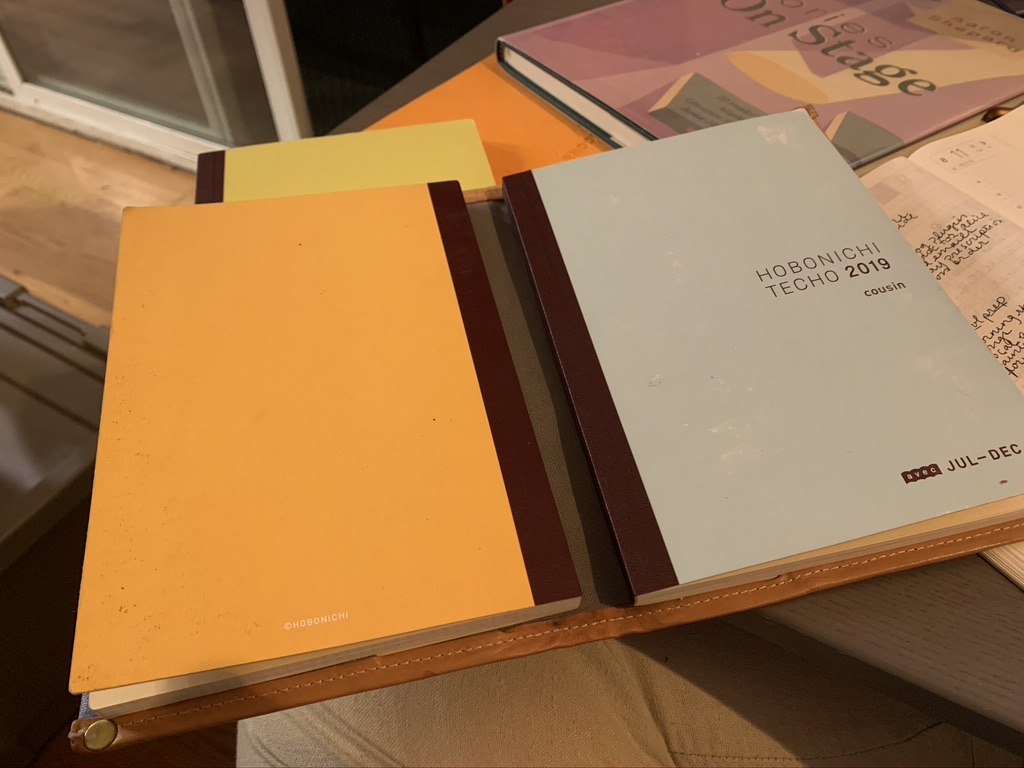
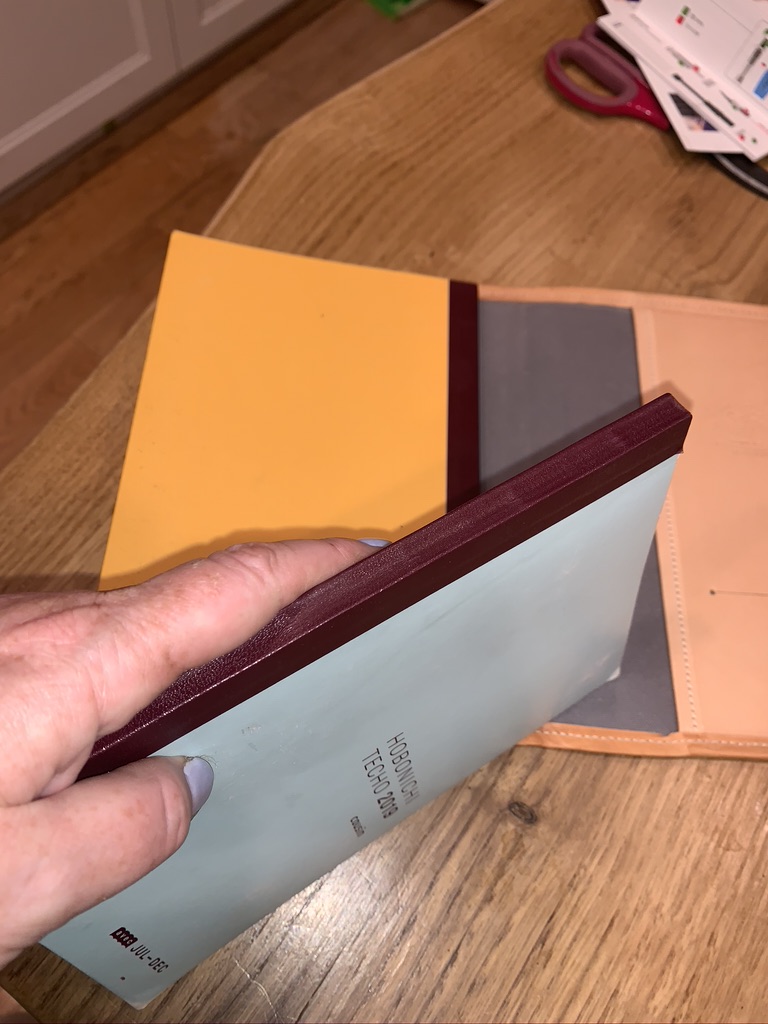



Leave a Reply